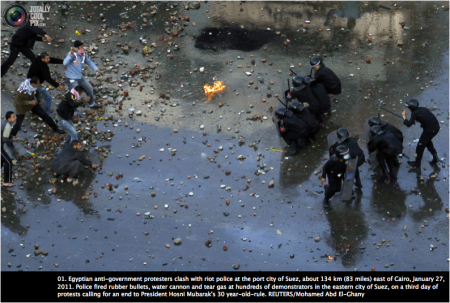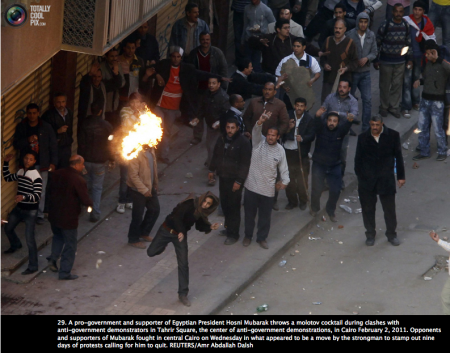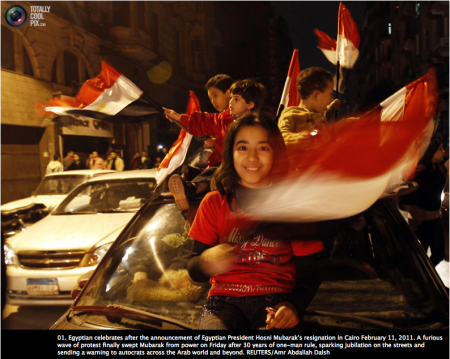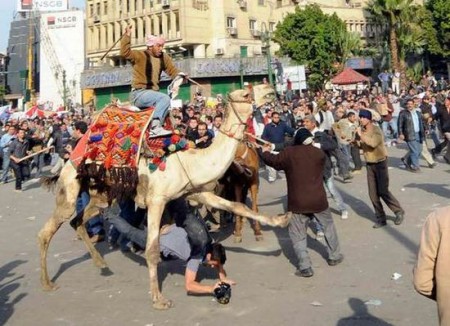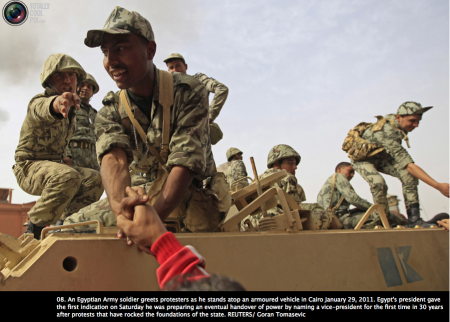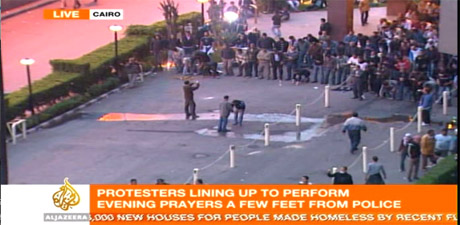Watch the full episode. See more FRONTLINE.
With the different outcomes of the protests in Tunisia and Egypt compared to Libya and Syria (and Bahrain), it’s important to recognize the courage of the protesters out there on the streets. It’s not really courage if there is nothing to risk. These men and women are risking everything.
Just like the lonely man who stood in front of a line of tanks during the Tiananmen Square protests in 1989. No one knows what happened to him.
About midday, as a column of tanks slowly moves along Chang’an Boulevard toward Tiananmen Square, an unarmed young man carrying shopping bags suddenly steps out in front of the tanks. Instead of running over him, the first tank tries to go around, but the young man steps in front of it again. They repeat this maneuver several more times before the tank stops and turns off its motor. The young man climbs on top of the tank and speaks to the driver before jumping back down again. Soon, the young man is whisked to the side of the road by an unidentified group of people and disappears into the crowd.
To this day, who he was and what became of him remains a mystery.
— FRONTLINE, 2006: The Tank Man: The Memory of Tiananmen June 4-5, 1989.
What does it take to show such courage? We’ve talked about how your situation in life, like poverty, can affect the ethical choices you make. We’ve also seen how different social and demographic conditions can force countries toward revolutions.
So it’s worth taking a moment to think about the protesters. And about ourselves. What do we value so much that it would overcome our fear to risk our lives?

